Blessed with ns Director
 Between curiosie a news about our Director, Frank Mariani, It takes its cue from that press release in September by the Press Office of the Holy See, or the signature, by Papa Francesco, the Decree on the heroic virtues of the servant of God Pius Alberto Del Corona, Titular Archbishop of Sardica, former Bishop of San Miniato, Founder of the Congregation of the Dominican Sisters of the Holy Spirit, born in Leghorn (Italy) the 5 July 1837 and died in Florence (Italy) the 15 August 1912.
Between curiosie a news about our Director, Frank Mariani, It takes its cue from that press release in September by the Press Office of the Holy See, or the signature, by Papa Francesco, the Decree on the heroic virtues of the servant of God Pius Alberto Del Corona, Titular Archbishop of Sardica, former Bishop of San Miniato, Founder of the Congregation of the Dominican Sisters of the Holy Spirit, born in Leghorn (Italy) the 5 July 1837 and died in Florence (Italy) the 15 August 1912.
An Archbishop and founder of Female religious congregation Fiorentina, Mons. Del Corona, that is about to become the next Blessed of the Dominican order and the upcoming Blessed fiorentino, as was prior of the convent of San Marco, "ousting" Prof. Giorgio La Pira, former Mayor of Florence, the Archbishop of Florence, Cardinal Giuseppe Betori, would soon the beatification, as well as of Cardinal Dalla Costa, his predecessor, and of the Diocesan priest don Julius Facibeni.
But no, Blessed will be the next Archbishop Of Corona, because there are various miracles, one of them already processed and awaiting recognition by the Vatican Congregation for the causes of Saints, While other candidates blessed fiorentini, at the moment, We have no news of miracles, Although recently it seems don Facibeni given "to do" in this sense.
Rightly you ask what does our Director, Frank Mariani, with the beatification.
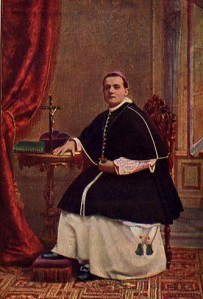 If you have arrived, by Papa Francesco, the signing of the Decree, antechamber of the beatification, This is due exclusively to the work of our Director that in 2000 He was called to complete the Diocesan process of Archbishop Of Corona, opened by the Roman Catholic Diocese of San Miniato – Roman Catholic Diocese where he was Bishop for 32 years- Since 1942 and remained in limbo for decades, then the accomplice to reform those processes, commissioned by Pope John Paul II in 1983.
If you have arrived, by Papa Francesco, the signing of the Decree, antechamber of the beatification, This is due exclusively to the work of our Director that in 2000 He was called to complete the Diocesan process of Archbishop Of Corona, opened by the Roman Catholic Diocese of San Miniato – Roman Catholic Diocese where he was Bishop for 32 years- Since 1942 and remained in limbo for decades, then the accomplice to reform those processes, commissioned by Pope John Paul II in 1983.
On behalf of the Dominican Sisters of the Holy Spirit, the sisters founded by Mgr. Del Corona, The Journalist Franco Vaticanista Mariani edited, not only the resumption of the process, finding various documents, often unpublished – including the miracle and medical documentation, at the time they submitted to the Court – plus other miracles, but taking care of all the organisational aspects to arrive at the closing of the Diocesan Process, and implementing numerous public initiatives, with an exceptional testimonial, What then-Councillor for culture of the Tuscany region, Mariella Zoppi, the On. Rosy Bindi and Sen. Lamberto Dini, at the time Parliament's leadership as Vice Chairmen of the two branches, In addition to all the mayors of the Roman Catholic Diocese of San Miniato.
The activities carried out by our Director led:
1) In February 2001 the Exhumation of mortal remains of Mons. Del Corona, preserved in the Tomb below the chapel of the monastery of the sisters in via Bolognese, has always been a place of pilgrimage of the faithful of the Diocese of San Miniato. Reconnaissance announced personally by Pope John Paul II during a Wednesday general audience, and by then Bishop of Fiesole and General Secretary of the Bishops ' Tuscany, Mons. Luciano Giovannetti, and the relocation of the remains in the new coffin, After reconnaissance, relocation chaired by then Cardinal prefect of the Vatican Congregation for the causes of Saints, Archbishop José Saraiva Martins, in the presence of 4 Bishops, 15 priests and 15 Banners with the respective Municipal Mayors.
2) The definitive closure of the Diocesan Process, in Episcopio of San Miniato, by the then Bishop Edoardo Ricci, the 28 August 2002, that such explicit mandate to the journalist Franco Vaticanista Canon Mariani to deliver all acts of the Diocesan Process for the Vatican Congregation for the causes of Saints, I received all the documentation the next 4 September.
Over the next 11 years the two Postulators of the causes of Saints of the Dominican order provided the final acts of the case at the Vatican Congregation, until September 2013 the signature, by Papa Francesco, the Decree on heroic virtues-Venerability of the servant of God Bishop. Pio Alberto Del Corona.
A news story occurred with much ahead of its time, as Maclain had received Vatican rumors of the possible signature of the Decree at the end of the year – it is customary for the Pope to sign these acts towards the end of December – instead did a surprise, with nearly three months in advance.
It was long expected that Decree, because they already 7 years ago, the Dominican Postulator, speaking in Florence for a ceremony in memory of don Facibeni, said to the Florentine Master Auzzi Galezzo, official portrait of Mons. Del Corona, that was almost close to the signing of the decree by the Pope, stating that that the first Dominican Beatus would never have been the pyre but Mons. Del Corona.
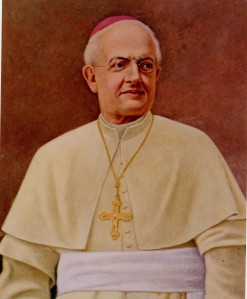 "Surely will be many, Today, commented our Director talking to some journalists – to claim that, because they are always so many people to get on the bandwagon, However if in 2000 I hadn't been called to treat the closing of the Diocesan process these would definitely still open. To me those were two challenging years, working every day, Sunday, including, without a day of rest, for over 12 hours per day. A hard and challenging work, but that already at that time gave me a lot of satisfaction, having the ability, not only to recover many important historical documents, and often unedited, but also to find a lot of medical records, unsought and collected at the time, various miracles attributes to the intercession of the servant of God Bishop. Del Corona, Managing, in some cases, to meet even some miracles, at the time still alive, or their direct family members. Not only, viewing some documents I discovered that one of these miracles had already been examined by the Diocesan Tribunal, anticipating what generally is a next step. Some is from 7 years he expected the papal signature affixed yesterday, But however inscrutable are God's designs. Efforts then today it will be important to rediscover, but also to discover the new generations, This important figure, not only of Dominican religious and Bishop, but also important writer and reader of the late 1800s, How is considered the Archbishop Pio Alberto Del Corona, a Bishop much esteemed by Pope Pius IX ".
"Surely will be many, Today, commented our Director talking to some journalists – to claim that, because they are always so many people to get on the bandwagon, However if in 2000 I hadn't been called to treat the closing of the Diocesan process these would definitely still open. To me those were two challenging years, working every day, Sunday, including, without a day of rest, for over 12 hours per day. A hard and challenging work, but that already at that time gave me a lot of satisfaction, having the ability, not only to recover many important historical documents, and often unedited, but also to find a lot of medical records, unsought and collected at the time, various miracles attributes to the intercession of the servant of God Bishop. Del Corona, Managing, in some cases, to meet even some miracles, at the time still alive, or their direct family members. Not only, viewing some documents I discovered that one of these miracles had already been examined by the Diocesan Tribunal, anticipating what generally is a next step. Some is from 7 years he expected the papal signature affixed yesterday, But however inscrutable are God's designs. Efforts then today it will be important to rediscover, but also to discover the new generations, This important figure, not only of Dominican religious and Bishop, but also important writer and reader of the late 1800s, How is considered the Archbishop Pio Alberto Del Corona, a Bishop much esteemed by Pope Pius IX ".
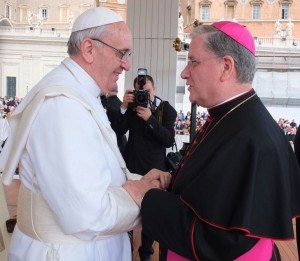 This is a commentary on the news of the current Bishop of San Miniato, Mons. Fausto Tardelli, Secretary of the Tuscan Bishops:"A great joy for the entire diocese of San Miniato. With great joy I learned that the Holy Father Francis has authorised the Congregation for the causes of Saints to promulgate a decree on the heroic virtues of the servant of God Pius Alberto Del Corona, Archbishop. My predecessor in the Chair of the Bishop of San Miniato was recognized by the Church as a person who lived in heroic mode Evangelical virtues: It's something that really brighten my heart. This recognition will lead to short, If God wants, to the glory of the altars, the servant of God Bishop. Del Corona with his beatification. Today has taken a very important step on this road and the Gospel witness of a great diocesan bishop and Dominican religious, already shines a light of glory. It is a fact for our Diocese, that between 1875 and the 1907, in a particular situation and complicated national and ecclesial history, He saw running from one side to the other of this man of God. As the good Shepherd has made all things to all men to preach, administer the sacraments, support, animate and be close to the people, especially the poorest and neediest, bringing all the consolation of God's mercy. Unstintingly, night and day he toiled for the Kingdom of God, traveling piggyback the sheep of the flock entrusted to him, praying and immolandosi for them in the humility of the cross. We are grateful to the Lord for this great Pastor that He donated to our Church and we are also grateful to the Holy Father Francis for having recognized the heroic virtues ".
This is a commentary on the news of the current Bishop of San Miniato, Mons. Fausto Tardelli, Secretary of the Tuscan Bishops:"A great joy for the entire diocese of San Miniato. With great joy I learned that the Holy Father Francis has authorised the Congregation for the causes of Saints to promulgate a decree on the heroic virtues of the servant of God Pius Alberto Del Corona, Archbishop. My predecessor in the Chair of the Bishop of San Miniato was recognized by the Church as a person who lived in heroic mode Evangelical virtues: It's something that really brighten my heart. This recognition will lead to short, If God wants, to the glory of the altars, the servant of God Bishop. Del Corona with his beatification. Today has taken a very important step on this road and the Gospel witness of a great diocesan bishop and Dominican religious, already shines a light of glory. It is a fact for our Diocese, that between 1875 and the 1907, in a particular situation and complicated national and ecclesial history, He saw running from one side to the other of this man of God. As the good Shepherd has made all things to all men to preach, administer the sacraments, support, animate and be close to the people, especially the poorest and neediest, bringing all the consolation of God's mercy. Unstintingly, night and day he toiled for the Kingdom of God, traveling piggyback the sheep of the flock entrusted to him, praying and immolandosi for them in the humility of the cross. We are grateful to the Lord for this great Pastor that He donated to our Church and we are also grateful to the Holy Father Francis for having recognized the heroic virtues ".
Nicola Nuti
By the number 1 – The Year of 15/01/2014
BIOGRAPHY OF THE SERVANT OF GOD
ARCHBISHOP PIO ALBERTO DEL CORONA
Alberto Del Corona was born on 5 July 1837 in Livorno, in the popular district called "Venice", by Giuseppe Del Corona and Esther Baron, wealthy merchants in kinds of cobbler.
Was baptized the day 8 July 1837 in the Cathedral of Siena with the names of Albert, Francesco, Filomeno.
Alberto was the fourth and last son, the mother died in 1839, When he was not yet two years old. Little or nothing is known of his childhood; only by a letter that had spent some time at Tremoleto. (Roman Catholic Diocese of San. Miniato) at some old Cobblers; his sister Teresa the face-from MOM.
As a boy he was inclined to the music that always loved him and did indeed "taste somewhat, but he was unable to adapt to study it; as well as attracting not mathematical study.
At the age of ten had to masters, as an external student, the Barnabites in the Collegio di s. Sebastiano, "the letters and to pity the educated" for five and a half years. For the study had a passion, and to prohibit the study was how to take away his life.
The 16 April 1851, in the Church of the Barnabites, He made his first communion with great devotion, showing now that love to the Eucharist that always characterized her spirituality.
At fourteen, he enrolled as an aspiring S conferences. Vincenzo de ' Paoli; for the distribution of subsidies to poor families and the teaching of the Catechism during evening classes in the Church of the Dominicans, in the fulfillment of these tasks you deserved the praises of the blessed Frederick Ozanam, come to Leghorn in 1853.
He was associated with the Dominican third order between the year 1851 and 1854, When the convent of S. Catherine was Prior the P. Domenico Valla and edited the P. Constantius Died.
Lively of indole, talented versatile, inclined from an early to Godliness and Church stuff, put upside down the whole House to pulpits and was even on boxes and cabinets to preach.
His greatest joy was to hear in the word of God Churches: He attended the sermons as a statue, fixed in preacher, and then he repeated for wire and sign the sermons you hear.
Felt the vocation to religious life, Alberto took the final decision in Montenero, at the Marian shrine near Livorno.
Puzzled about choosing between the Dominicans and Barnabites, It was decided for the latter driven by his devotion to S. Catherine of Siena and the Dominican life attraction, monastic and Apostolic at the same time, divided between prayer, the study and preaching.
The departure from Livorno of his friend Hugh Becherini, He took the religious habit in S. Marco as Lodovico il 27 may 1854, It was his decision and urge to 17 years (in the last of November of the same year) He entered the convent of S postulant. Marco, Florence.
Let festive home, but then he heard powerful nature and he spent in tears the first eight days of the convent.
On February 1, 1855, eve of purification, After the Vespers, He took the Dominican habit taking Pius names Thomas; the 3 November 1859 He made his religious profession, with 21 months of age dispensation request laws leopoldine in Tuscany, truly extraordinary "dispensation to be fr. Pio Del Corona a young man of uncommon intellectual ability and exemplary conduct ".
Having already finished his literary studies at the Barnabite Fathers, brother Pio studied following all the philosophical and theological course, and the 20 November 1859 He was a graduate reader; the 12 February 1860, only 23 years, He celebrated his first mass in the Church of S. Marco in Florence
The pious father Alberto was instantly awake and born at the teaching of philosophy, of Theology and languages, and he's. Marco over the interiors, even excellent external students; Suffice it to recall, among the first, the P. Ambrose Lingaraj, then Bishop of Assisi, and, among the seconds, Mons. Donato Velluti Zati-, then titular Archbishop of Patras.
Proved in him, Since the early years of priesthood, marked as orator and writer, he preached the Advent in the Duomo of Florence and published elevations on the Eucharist and the four cornerstones of happiness.
From 1872 al 1874 he exercised the Office of prior in S. Marco, and much helped, After the expulsion of the religious, to retrieve the convent of S. Domenico di Fiesole, that was repurchased and reopened the 10 November 1879.
The meeting with Mrs. Elena Bonaguidi, in 1869, him to an inspiration received in reading life of Santa Paola romana (347-404), to found a community that mirrored the one founded by the Saint on the Aventine hill.
This inspiration came to fruition the 12 November 1872, When with the approval of the P. Vincent Jandel, General of the order was opened the new small community at Villa Nuti, in Via's. Marta (Florence).
Among the 1875 and the 1878 It was manufactured in via Bolognese a larger Monastery called the Holy Spirit, and the 28 October 1878 There were the first ten who were dressed for the tertiary habit by the same Founder.
Up early the blessed Pope Pius IX approved the creation of the new monastery (they began to call the asylum) and entrusted the spiritual direction in Mons. Pio Del Corona (already the Bishop 1875), allowing him to visit every two months.
The 21 June 1881 was finished and blessed the new Chapel of the monastery which was later consecrated solemnly from the same Mons. Pio, the 7 June 1906.
The 5 September 1912, the community kindergarten, remained till then under the jurisdiction of the ordinary in Florence, was transferred under the jurisdiction of the Dominican order.
As already mentioned, in November 1874 Padre Pio Alberto had been appointed by Pope Pius IX, titular bishop of Draso and given to coadjutor, in delicate circumstances, the Bishop of S. Miniato, Mons. Hannibal Barabesi: the latter , being in serious contrast with some priests of the diocese, He had been invited by the Holy See, unnecessarily, to resign.
The rejection of Barabesi, the Holy See had reacted by appointing a Auxiliary Bishop (Mons. Pio) to treat the spiritual Government of the diocese and leaving Barabesi administrative and economic tasks. Consecrated the 3 January 1875 in the Church of S. Apollinaris in Rome, the young Bishop, the 18 January 1875, He made his entry into S. Miniato, soon earning the esteem of all, so much so that the 3 February 1875 Pius IX, in a short, it pleased praising his prudence and his charity.
The coexistence between the two bishops, at the beginning, It was difficult and problematic, However later became friends.
Mons. Barabesi continued, until his death, to reside in the Bishop's Palace and to receive the salary which the Kingdom of Italy paid for every Bishop.
Mons. Pius was forced to live a faithful and offers to dwell outside the Bishop's Palace, as you can see, in this site, the page dedicated to the presence of Mons. Pio in San Miniato.
During his episcopate the pastoral visits were followed almost without interruption, with great fruit in cent parishes of the diocese. Attentive to the formation of the clergy Mons. The Crown reopened the seminary and I personally taught some discipline.
In this same time he printed the little Summa Theologiae, The golden chain, The mysteries of Jesus Christ, the Evangelical Doctrines and Stories: rich works great and sincere piety doctrine.
In 1887 he preached the Lent in S. Miniato and consecrated the diocese to S. Heart, comforting fruit:.
Regular pastoral letters addressed to the clergy and to the people, rich with Saints teachings, and preached by itself the missions in the diocese, arousing anywhere enthusiasm.
Personally visited prisons and hospitals; and more than once he preached the Spiritual Exercises courses prisoners.
The College's. Thomas Aquinas, a S. Miniato, founded in 1885 from P. V. Bandecchi, He kept to himself and religion lessons was interested in spiritual and intellectual profit of young lay students (seminarians or not Friars).
And when the College is closed, Mons. Pius brought the peso continuing to extinguish debts, Although not obligated, almost to his death.
In 1897, died Bishop Mons. Barabesi, was, Despite his refusal, and surrounded by the joy of the whole Diocese, high from home owner to Draso to S. Miniato (finally acknowledged by United as the 18th Bishop of S. Miniato).
In 1899 He was appointed Assistant to the Pontifical throne, and the 18 January 1900, among the rejoicing of the diocese celebrated its Silver Jubilee of Bishops.
The 4 August 1906, He asylum for the feast of St. Domenico, manifested in him, fierissimi, symptoms of liver disease from which more is not recovered.
In addition to this a near total blindness, He returned to ask to be relieved from the burden of the Government of his diocese, and asked, as her convent of rest, S. Domenico di Fiesole, wishing to prepare for death in the quiet of the cloister.
The Pope's. Pius X accepted the waiver, sciogliendolo from any liability, and the 14 September 1906 appointed Mons. Pietro Maffi, Archbishop of Pisa (then Cardinal), Administrator of the Diocese of San. Miniato.
Later, in 1908, elected as the new Bishop in the person of Mons. Carlo Falcini, Mons. Pius was promoted to titular Archbishop of Sardica.
From 1906 until 1912 Mons. Pio del Corona alternated between his home between the convent of S. Domenico di Fiesole and the monastery of asylum.
Without his blindness, the comfort of reading and writing, doubled the pray and meditate.
In 1908 underwent the operation of floodgates and so was able to resume publishing his other works.
His life in the cloister of St. Davis stood out for the exact osser-vanza of every rule and a great example that gave all. The 3 November 1909 took place the golden wedding of his religious profession, and the 12 February of the following year he flew fifty years of priesthood; in these circumstances, two solemn ze about him greetings and felicitations, along with a valuable autograph of S. Father.
The convents of San. Domenico and asylum were the joy of Putting gold and made great preparations, but Mons. Pius you took each day and covertly retired for three days in the monastery of the Passionists at the Galluzzo.
Despite worsening health, the 18 February 1912 Mons. The Crown wished to start preaching of sisters of asylum; However, rising fever forced him to desist after the sixth day.
Hoping a healthier air improvement, He returned to S. Domenico, the latter proved futile attempt to retrieve force, the continuous aggravation of the illness prompted Mons. Pio, the 29 July, back to kindergarten, place that had chosen to die.
The 15 August 1912, day when the church celebrates the assumption of our Lady into heaven, on the date that he himself had prophesied, Mons. Del Corona left this life to another and better Life.
He was buried in the cemetery of Soffiano in Florence, later his body was moved in the crypt beneath the Church Kindergarten, where he still rests.

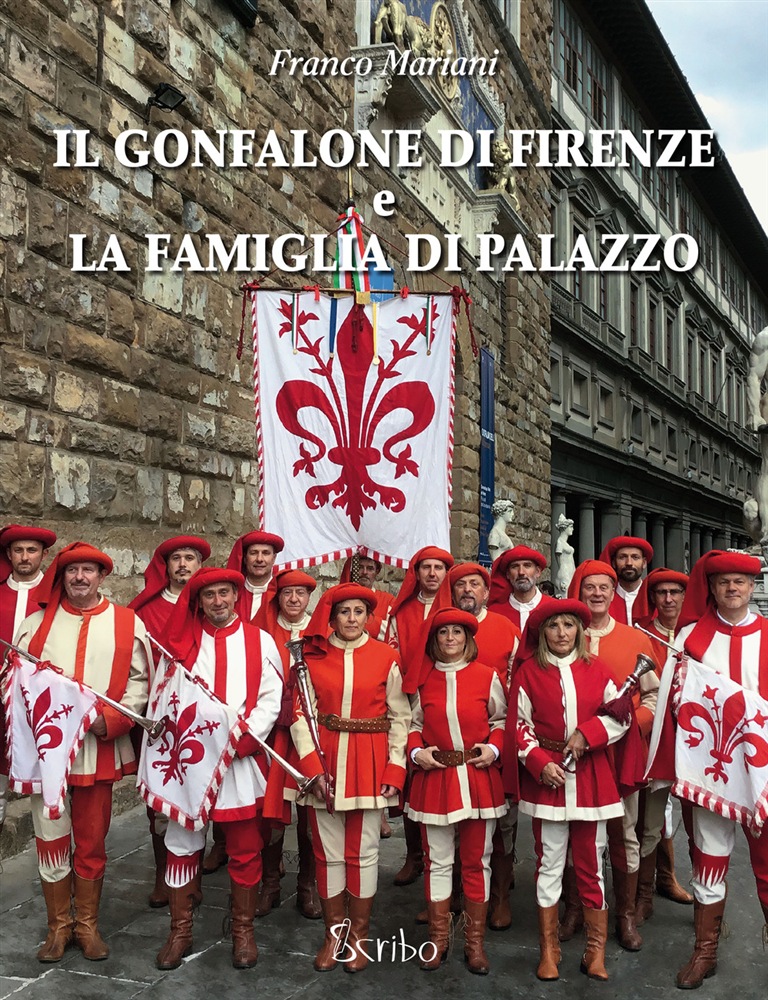

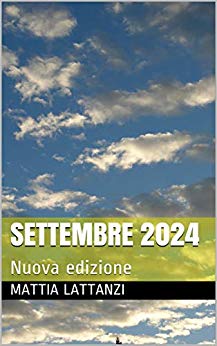


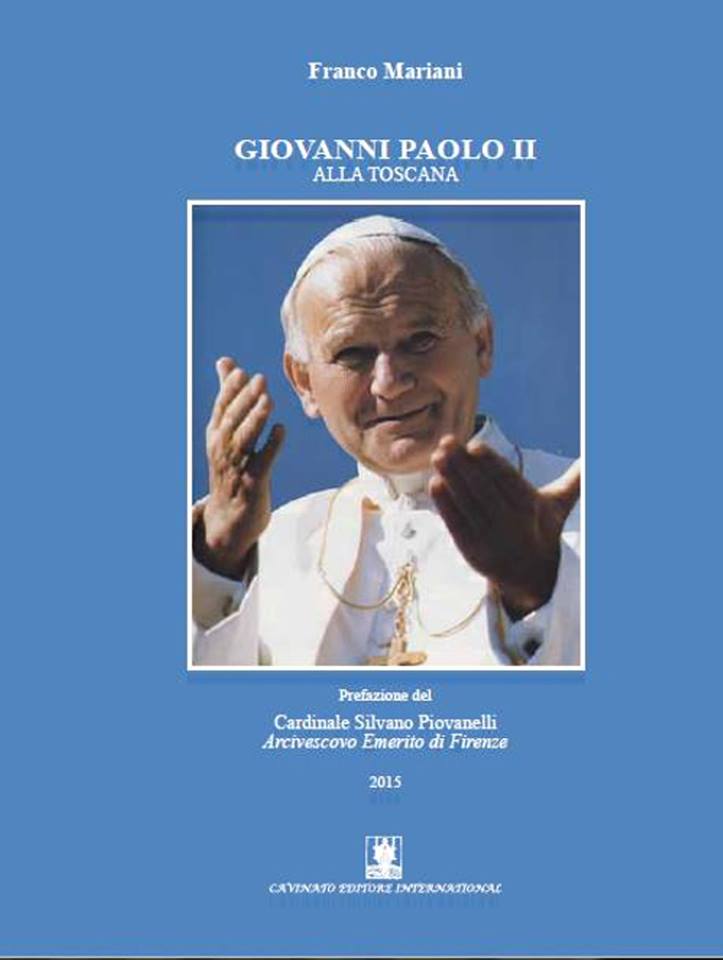
Follow Us!